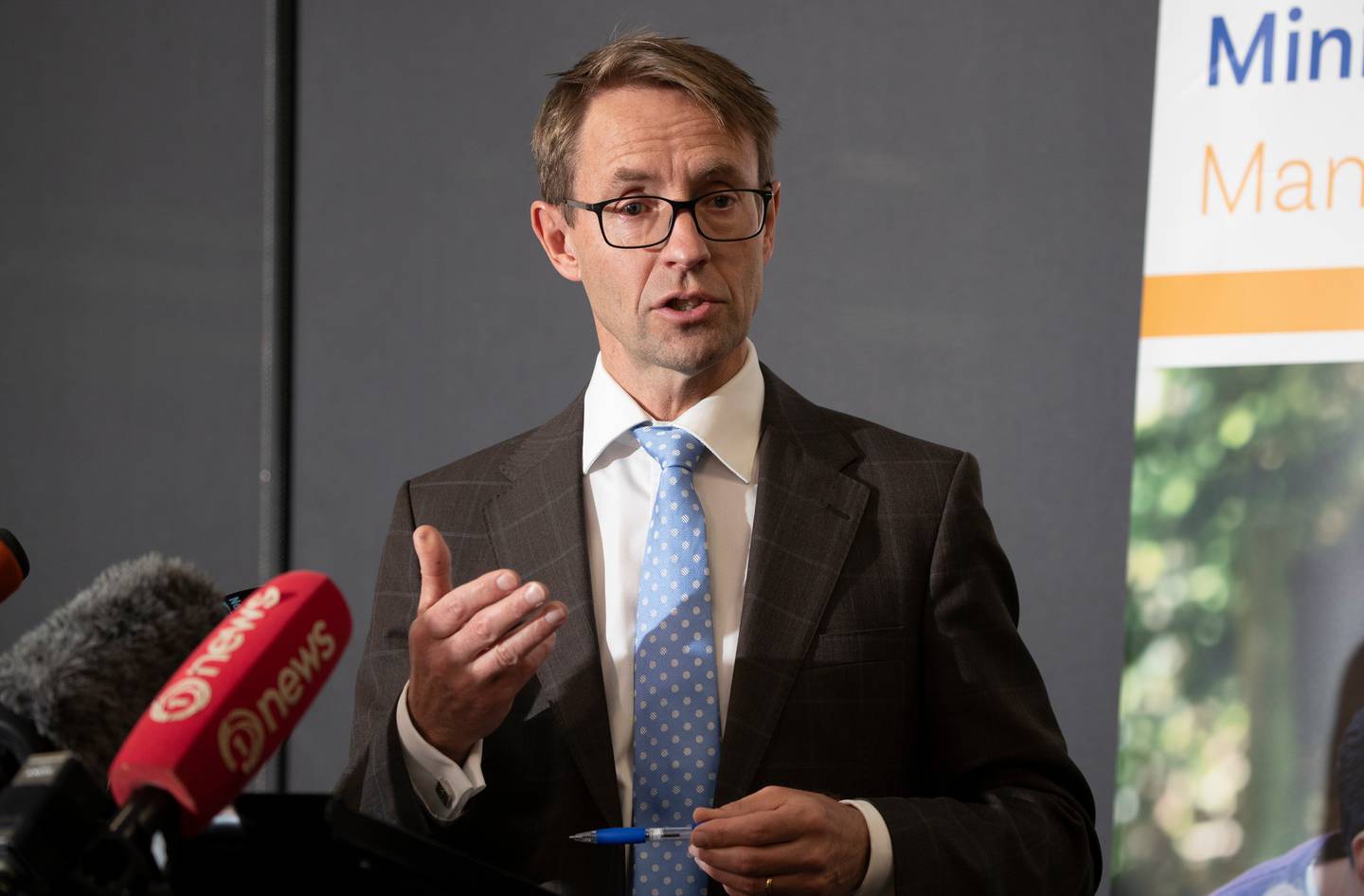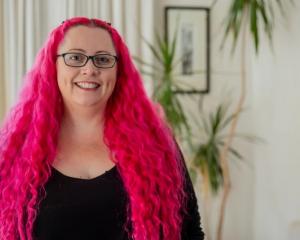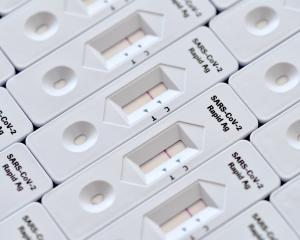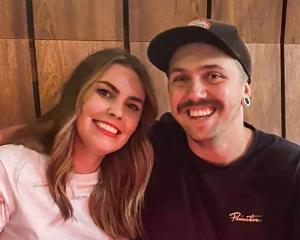Masks and rapid antigen tests (RATs) will now be made available for free and anti-viral drugs - which help keep Covid-19 patients out of hospitals - will be offered to about 400,000 people.
The moves are part of the country's ongoing response to the disease.
The country is battling a second wave of Covid infections, with more than 11,000 community cases for a third straight day.
There were 11,382 new Covid cases today and 23 virus-related deaths, all occurring in the past week. A child under 10 was among the dead.
Covid-19 Minister Ayesha Verrall, Director-general of Health Dr Ashley Bloomfield and new Health NZ chief executive Margie Apa briefed reporters today on the next steps in the response to the virus.
Verrall said NZ would remain at the orange traffic light setting. The Government had weighed up whether moving to red would make a significant difference, but gathering limits would only offer "an incremental benefit".
Wearing a mask, getting boosted and staying home if sick were more effective than a return to the red setting, she said.
However, red was not redundant: "This is a virus that keeps changing, therefore we do need a flexible response system.
"We need to have a response we can flex."
However, she said at the moment she believed the country could get through with more emphasis on the measures at orange.
Verrall said she did not think a lockdown was needed for this variant, noting that the effectiveness of lockdowns tended to abate the more you used them.
She said there was no "magic case numbers" threshold at which the higher red setting would be imposed - it depended on factors such as how the virus was spreading and its severity.
Verrall said the most effective measures for the current outbreak were masks, boosters, widening the scope of anti-virals and encouraging people to test.
Verrall said in the past there had been concern about super-spreader events - for which gathering limits were helpful.
However at present, people were catching Covid in their homes and workplaces so that was where the focus was.

"It's the basics that are going to get us through this."
Free masks and RATs to be made available
Free masks and rapid antigen tests would be offered at collection sites, Verrall said.
People would no longer have to have Covid symptoms or be a household contact or a critical worker.
However, she said people should still book in for RAT collection, to ensure there was enough stock.
The country currently had 100 million RATs.
The Government is also providing 10 million child-size masks for Year 4-7 students and up to 30,000 masks a week for all other students and school staff.
Verrall said if schools took up the support of free masks in the next term, it would make a difference: "Please use it".
A new campaign to try to push along the booster uptake would also be run.
About 400,000 people would be eligible for anti-viral drugs, which helped keep people out of hospital. She said many accessed them through GPs. She encouraged GPs to identify people in their care who were most at risk, and be ready to prescribe them if that person tested positive.
Pharmac would today announce new eligibility criteria for the anti-viral drugs - anyone over 57 years of age would be eligible, Verrall said.
The expanded criteria will increase the percentage of eligible people for the anti-viral drugs from 2 per cent to 10 per cent.
People who were eligible would also be texted, so they knew to go for the anti-virals if they were unwell.
"These are the most effective measures we have," Verrall said.
"They are simple, but if we all do them we can lessen the burdens on the health system."
One of the anti-viral drugs, Paxlovid, reduces the likelihood of an at-risk person going to hospital by almost 90 percent, Verrall said.
More than half the people newly admitted to hospital yesterday were 70 or older, indicating the use of the anti-viral drugs.
Verrall said friends in the health system had told her of the struggle in coping with demand - she said that pressure carried clinical risk, and was difficult for those working in the sector.
Asked why it had taken so long to get to this point, Verrall said many of the steps were already in place but needed more emphasis - for example she said although anti-virals were available, the use of them had not increased when case numbers went up.
Bloomfield said stocks of RATs and masks were very good - widening access was doable "and we'd rather have these things being used than sitting on the shelves".
He said the RATs were not there for businesses providing tests for staff, but for people and families who needed the tests.
The most important were household contacts testing, while people might also want to test before going to see an elderly relative.

Cases could peak at 21,000 a day: Bloomfield
Bloomfield said health officials had been asked to have another look at the red traffic light settings to see - if they were deployed - if they would be effective.
The current situation was that with more open borders, and more cases being detected at our border, the number of cases had increased week on week.
Cases were expected to peak at 21,000 cases a day - and hospitalisations were expected to peak at more than 1000.
Modelling suggested Covid infection rates were going up around the country - unlike the first wave, when Auckland had been first to go. The current wave was expected to peak in the second half of July.
Bloomfield said measures could be used to try to bring down those numbers to below 1000. "We anticipated second wave of Omicron, we've planned for it. The public health measures in place and the actions of us all will be what makes the difference here."
Correctly wearing a surgical or N95 mask could reduce the risk of infection by about half.
He urged those who were not wearing masks because they were uncomfortable to think of health workers, who had to wear them day in and day out.
Asked what his recommendation for mask use was, Bloomfield said it was the one that had been picked up. There had been a drop-off in mask use in the places where they were mandated - such as shops and on transport - and people were urged to wear them again.
The general rule of thumb was that people should wear masks in any indoor setting that was not their own home.
"Mask-wearing should be like wearing a seatbelt. That's why we still have an order requiring people to wear them in some indoor environments, and we are encouraging people to wear them in other indoor environments," he said.
He said the latter included schools.
"Am I confident people will listen and follow through on the messaging? I am. It's important again people re-commit. We are not through this yet."
Asked about research on compliance with the orange rules, Bloomfield said there was still a broad understanding of the rules and a willingness to abide by them - should there be a need to do so. Over time compliance had declined, and there were differences between age groups.
People should also still be testing and following the isolation rules. People should also get their flu and Covid-19 booster vaccinations.
The six-month interval for boosters was under close watch.
"My plea to you, to everybody in New Zealand, is to please do your bit."
The BA.5 variant was better at evading immunity, Bloomfield said.
"That is important for people who have been infected previously."
According to the latest data, the BA.2 subvariant of Omicron accounted for 41 percent of cases, BA.4 amounted to 11 percent and BA.5 47 percent. BA.5 is expected to become the dominant variant.
Only 2-3 percent of cases now were those who had been reinfected, but he was expecting that to increase.
He said he expected only about half the number of actual cases were being detected.
The rolling seven-day average for community cases is now 9826.
Health staff prioritising urgent care
Health NZ chief executive Margie Apa said they were closely monitoring the impact on the health system.
The workforce was facing high demand in hospitals as well as primary care.
The health sector was also battling with worker shortages due to sickness among staff, which meant longer waits than were desirable.
Apa said they were working regionally to try to prioritise urgent care, while also trying to keep non-urgent surgery and procedures going. She said it was not an ideal situation but "we ask for some patience from our communities."
Urban and metro hospitals were especially hard hit by staff being sick. Health NZ was working on ways to offer more virtual or telephone health services.
There were also efforts to allow more after-hours help.
Apa said this week some hospitals had found more than 200 people were reporting in sick in any one day.
On winter illness, there were 38 people in Auckland and Counties Manukau hospitals for SARI illnesses (severe acute respiratory infections), since the Ministry of Health's last update on Thursday last week. Of those people, Covid-19 was the cause of the infection for 18 percent and influenza was the cause for 32 percent.
Other causes of infection were rhinoviruses and enteroviruses (39 percent).
SARI-associated influenza hospitalisation is the highest in the past 10 years.
However, the current rate of SARI hospitalisations in Auckland and Counties Manukau is in line with rates seen in recent years, according to the ministry.













